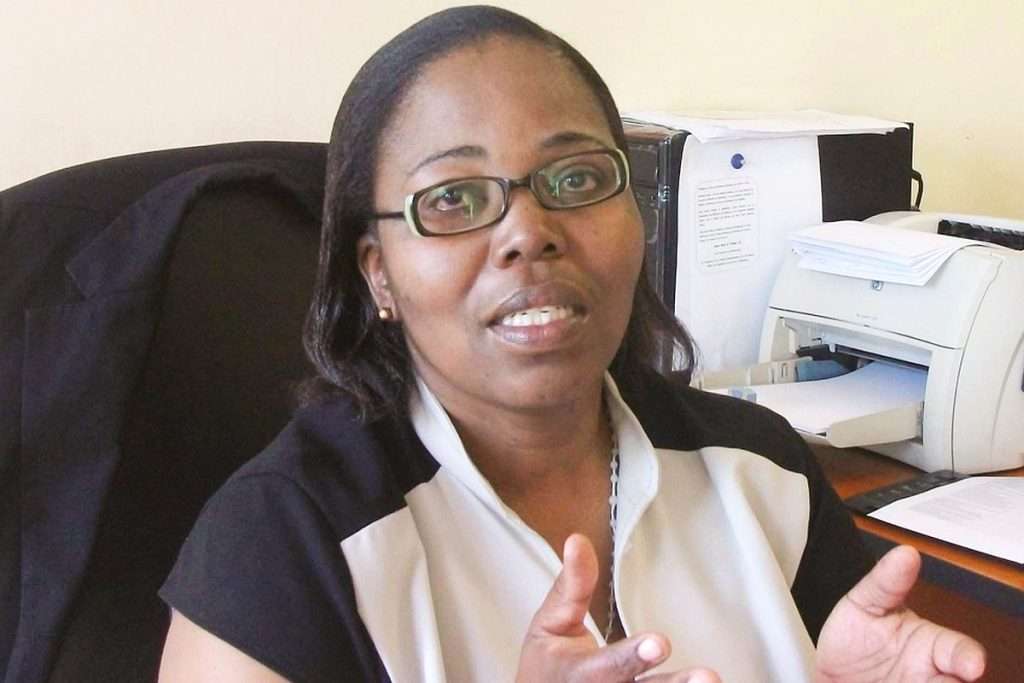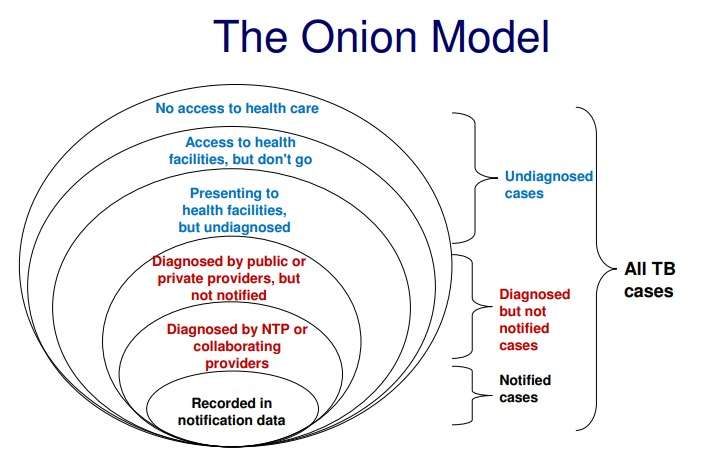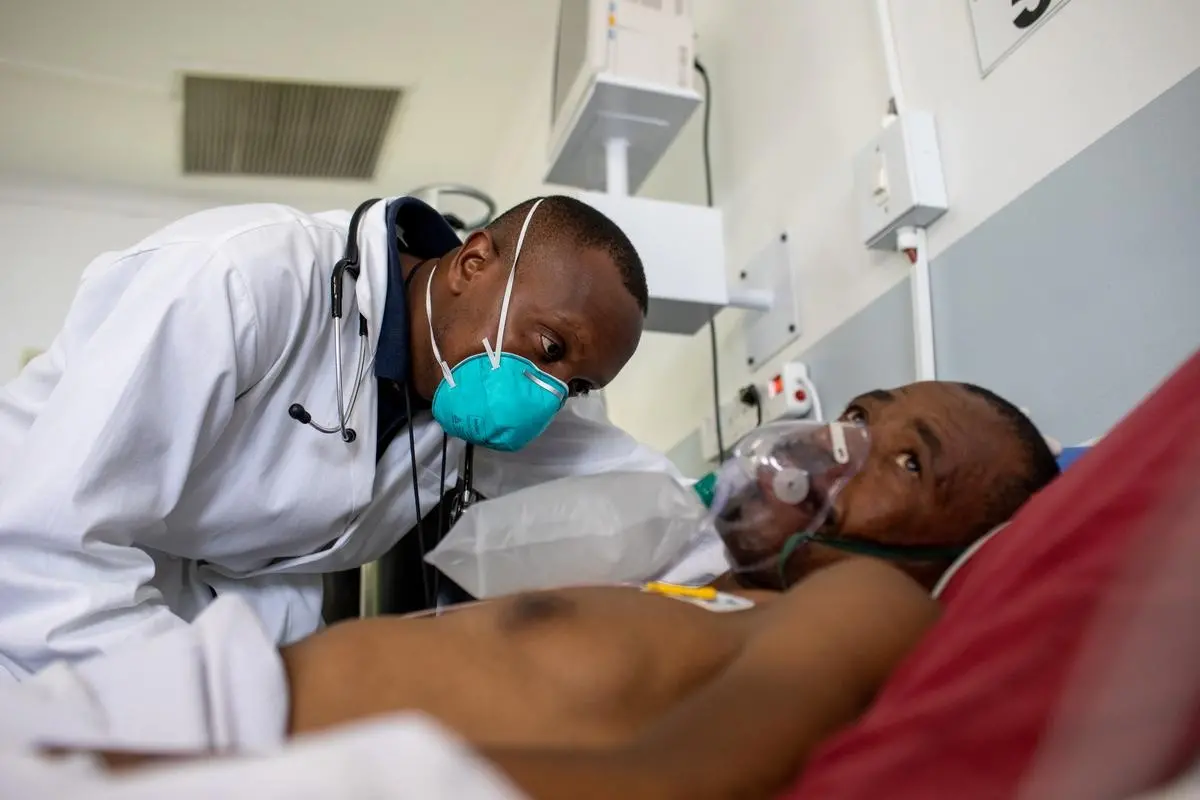Crafting Solutions: Lesotho’s Post-Covid-19 Struggle with Missing TB Patients
13 November 2023 by Limpho Sello

Dr Llalang Maama serves as the Ministry of Health’s Tuberculosis and Leprosy Manager. Credit: Internet.
In the wake of a post Covid-19 landscape, Lesotho faces a daunting challenge in the realm of healthcare.
Dr. Llang Maama, a dedicated physician leading the charge against tuberculosis and leprosy at the Ministry of Health, unveils a stark reality: despite anticipating 14 000 missing tuberculosis (TB) cases within a year, only 32 percent of these missing individuals have been located to date.
“In order to reduce the burden of TB in Lesotho, we have to find the missing TB patients,” remarked Dr Maama in a recent interview with Uncensored News.
The alarming decrease in finding missing patients, especially when compared to the pre-Covid-19 rate of 55 percent, extends beyond Lesotho, echoing in countries across East and South Asia.
The East and South Asian nations witnessed a 20-40 percent drop in TB notifications in 2020 during the Covid-19 era, mirroring Lesotho’s struggles.
A July 2021 East and South Asia report titled Optimising Active Case-finding for Tuberculosis reveals that this decline persisted despite region-wide efforts to maintain TB services throughout the Covid-19 response.
As Lesotho confronts the enigma of missing TB patients, a narrative unfolds, weaving together the stories of these individuals and the tireless efforts of those working to bridge the gap in a world forever changed by the echoes of a global crisis.
In August 2023, the Ministry of Health concluded the National TB and Integrated Health Service campaigns. Dr Maama reports a modest success, with only 286 missing TB patients located, translating to a mere two percent of the 14 000 missing TB patients.
Despite the seemingly small percentage, in a country burdened with one of the world’s highest TB incidences, every patient found is a crucial victory.
“Patients were initiated on treatment. Their contacts were traced for testing, and if found to be infected with TB, they were initiated on medication through the assistance of Village Health Workers (VHWs),” explained Dr Maama.
Leaving no stone unturned
The World Health Organisation (WHO) states that active case-finding, or systematic screening for tuberculosis, is an important tool to reach out to missing TB patients.
“When appropriately implemented, the activity is cost-effective, helps to reduce diagnosis and treatment delays, and prevents the spread of the disease,” states WHO.
In Lesotho, the Ministry of Health is implementing active case-finding through different interventions, including community campaigns which Dr Maama describes as “an extension of services to those who are unable to go to the facilities to seek services.”
She proposes that Lesotho must invest more money in TB, as this will enable it to find the missing TB patients.
“There is a need to mobilise funding for TB, especially domestic funding as the United Nations High-Level Meeting has recommended,” she said.
Asked if the figures truly reflect the TB crisis in the country, Dr Maama says the TB burden in Lesotho is based on the TB prevalence survey conducted in 2019, which could provide a true picture.
“The difficulty in finding the TB patients may make us think that estimates are high, but until we turn up all stones and find nothing, we have to align and undergo a deep search at different levels,” Dr Maama said.
Apart from the existing efforts, Dr Maama says much more still needs to be done, and Lesotho needs to use an onion model approach to get to the depth of TB elimination.

The dataset was compiled by WHO consultant Ana Bierrenbach in a report titled WHO Task Force Framework on the Assessment of TB Surveillance Data – Revisiting the ‘Onion Model.
Dr Maama says community interventions are one layer, while the other layer is to improve the recording and reporting of TB so that all patients can be registered and treated.
“On this layer, we are conducting data review workshops which have helped identify flaws in data, data for action interventions to use data to inform programming, and timely address performance gaps, and quality improvement projects developed to address the performance, especially in finding the missing people with TB.
“Then the diagnosis in the laboratory, improving the quality of TB testing in highly qualified TB laboratories. This has improved access to confirmed TB patients and improvement in TB screening also using digital x-rays with artificial intelligence has dramatically increased possibilities to diagnose sub-clinical TB and this formed part of the community TB screening mentioned above.
“Use of urine to diagnose TB in Advanced HIV Disease, stool to diagnose TB in children. We are finding 5 percent of the children which falls within the right range but there is room for improvement to 15 percent,” Dr Maama said.
More patients at health facilities
While Lesotho is grappling with the mystery of missing TB patients, Dr Maama says health facilities continue to record a substantial increase in finding TB patients.
“More people with TB are still found at the Health facilities,” Dr Maama said. In 2022 alone, at least 1 185 patients were notified of their TB status between April and June. Between July and September 2022, 1 150 patients were notified of their TB status at health facilities.
This year alone, health facilities notified a total of 2 789 TB patients of their status. Dr Maama says this is a clear indication that health facilities are still finding more patients.
“We see a substantial increase; patients were mostly identified at the health facilities,” Dr Maama said. This, based on statistics provided by the Ministry of Health, shows that both community outreach campaigns and health facilities notification are critical for finding missing patients.
“Therefore, the ongoing campaigns are contributing to this critical aspect of finding the missing persons with TB,” Dr Maama said, adding “in addition to the World Health Organisation (WHO) targets, the country is pursuing the United Nations High-Level Meeting (UNHLM) target meant to augment the process towards the goal to end TB by 2030.”
Meanwhile, a 2023 World Health Organisation Global TB report, released on 7 November, places TB incidences in Lesotho at 661 cases per 100 000 population. This is an increase from 2022’s 614 per 100 000 in 2022. The case detection rate is set at 37 percent, and the treatment success rate is 77 percent.
Preparedness
According to a 2021 report on Minimising the Impact of the Triple Burden of Covid-19, Tuberculosis, and HIV on Health Services in sub-Saharan Africa, Covid-19 has added an additional burden to already overstretched health systems in sub-Saharan Africa, which, among other things, have been focused on the long-standing dual epidemics of TB and HIV.
The report indicates that countries like Lesotho significantly bear high proportions of TB and HIV cases as compared to other countries in the West.
“Modelling studies predict that the pandemic-related disruptions in TB and HIV services will result in significant increases in associated morbidity and mortality over the next five years.
“Furthermore, limited empirical evidence suggests that SARS-CoV-2 co-infections with TB and HIV are associated with an increased mortality risk in sub-Saharan Africa,” read the report.
The report indicates that public health systems that deliver care to people living with TB and/or HIV, service disruptions can have profound effects on individual health outcomes and on overall population health.
These disruptions, the report notes, comprise the pathway for the harms that the ongoing pandemic inflicts on human health and must be monitored and addressed.
“In many low- and middle-income countries, health systems routinely operate with overextended human resources, limited budgets, and limited equipment or commodities. These systems are especially vulnerable to disruption when a crisis such as Covid-19 emerges, and the effects are already being witnessed,” reads the report.
The report recommends that countries must measure, document, and respond to routine program implementation failures during crises such as the Covid-19 pandemic.
“For TB, such metrics could be the disposition of public awareness campaigns, availability of testing, the number of TB tests conducted and contact tracing activities, and the number of individuals initiated on prophylaxis and on treatment,” highlights the report.
Although the report indicates that sub-Saharan Africa is seemingly less impacted by Covid-19, the pandemic’s indirect effects on TB and HIV treatment and prevention services are of substantial concern.
“The main effects of Covid-19 on TB and HIV, including among children, include disruptions in testing, treatment and BCG vaccine access, poorer treatment outcomes, and increased susceptibility to new infections.
“Rapidly generated but rigorous data are needed to address Covid-19 effects in the context of TB and HIV programming for populations of different ages and dispositions, geographical residence, and socio-economic status,” highlights the report.
In Lesotho, Dr Maama says lessons learnt from Covid-19 include the need for the country to be prepared for pandemic responses and maintain the pillar on the continuation of essential services.
She said there is also a need for bi-directional TB and Covid-19 screening to reduce the risk of missing TB diagnosis and manage both diseases if confirmed.
“It is important to integrate testing platforms for TB and COVID-19 and improve access to diagnosis,” Dr Maama said.


